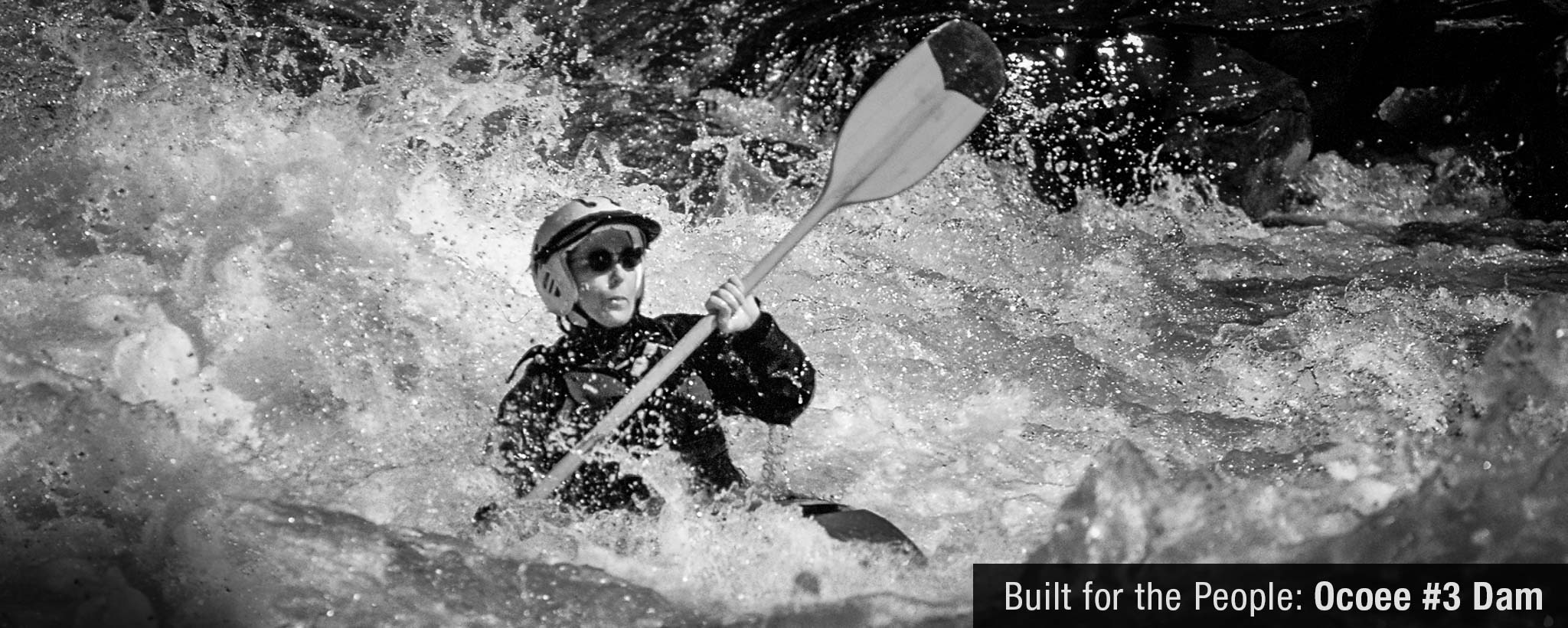
From War Machine to World-Class Whitewater
When Ocoee Dam No. 3 was built to help meet energy needs during wartime, it was thought there would be little or no recreational interest in the project. Flash forward fifty years, and you get an Olympic whitewater course and a world-class tourist destination.
On the day in 1943 when TVA flipped the switch and began producing power at its Ocoee No. 3 Dam for the first time, Under-Secretary of War Robert P. Patterson sent the Army’s congratulations. His message read:
“You have driven home another blow to the Axis by putting into operation Ocoee No. 3 Dam and power plant. Electricity from this station will help turn out the weapons and materials of war to defeat our enemies.”
TVA had already built or purchased 15 dams that were contributing to the war effort, including three projects on the Ocoee River. But there were still dire predictions of a crippling power shortage in the Southeast. Aluminum plants in Alcoa, Tenn., had been pressed into military service to produce metal for aircraft. And in nearby Oak Ridge, work was secretly underway to build a uranium enrichment plant to supply material for the first atomic bombs. Both required enormous amounts of electricity.
Built for War
TVA engineers knew the Ocoee River had more hydroelectric potential—an undeveloped fall of 316 feet below Blue Ridge Reservoir—and proposed a fourth project, Ocoee No. 3, to meet these needs.
The design of the Ocoee 3 project reflected the wartime need for power. Ocoee No. 2 would soon need extensive repairs so TVA weighed the economy of combining the Ocoee 2 and 3 projects and constructing a new powerhouse just upstream from the existing No. 2 plant. But that option was ruled out due in part to the necessity for rapid construction and the need to keep Ocoee No. 2 in continuous operation for the war effort.
The urgent need for power also drove the project schedule. The dam, tunnel and powerhouse were all to be completed in just 18 months. That meant, according to the technical report documenting plans for the project, “No feature of the dam could be permitted to be of a magnitude too great to complete in this period.”
To the engineering and construction staff’s credit, the dam was closed just seven months after the first concrete was placed. But delays in the delivery of the turbine and other vital equipment postponed power generation until April 1943—22 months after construction began.
Saving the Soil
Getting new hydroelectric power projects into operation quickly wasn’t the only challenge facing TVA engineers in the war years. They also had to ensure the dependability of the projects for years to come.
For Ocoee No. 3, that involved a four-letter word: silt.
Fifty square miles of watershed in the nearby Ducktown-Copperhill area, known as the Copper Basin, were denuded of vegetation by sulfur fumes from the local copper smelters. As a result, Ocoee No. 2 reservoir had already filled up with silt because of the severe erosion. And, at the existing rate of siltation, the engineers working on the Ocoee No. 3 project calculated that it, too, could fill up with silt in as few as 40 years.
This problem had a profound effect on the general layout and design of the Ocoee 3 project. The chosen dam site offered reasonable storage capacity for both water and silt, and plans for the dam and intake allowed for the possibility of adding a de-silting basin to the four-mile tunnel that would carry river water to the powerhouse. A number of special features also were incorporated into the project’s design, including two sluice openings to allow silt removal through the dam. (These gates are now used to provide water flows for downstream recreation.)
TVA and the Tennessee Copper Company began planting trees to combat soil erosion in the area in the late 1930s. But it took decades to find plants that could tolerate the harsh conditions, and the heavy silt load continued to plague TVA hydroelectric projects on the Ocoee.
Then in 1984, TVA proposed fertilizing and seeding vegetation using a helicopter, and a cooperative effort, involving private industry, government agencies and landowners, was launched. The results were phenomenal. Within two to three months of aerial seeding, erosion rates dropped from 195 tons per acre to five tons per acre. Today, more than 90 percent of the former desert is reforested.
An Olympic-Size Surprise
Despite Ocoee No. 3’s spectacular mountain setting, the new dam was thought to have very little recreational significance. The reservoir level would fluctuate too much and the lack of highway access would limit recreational use, the engineers stated confidently in their technical reports.
They were wrong.
During a maintenance outage in 1977 for the reconstruction of the Ocoee No. 2 flume (a wooden trough that carries water from the dam to the power plant), water was released into the Ocoee riverbed and a new industry was born—commercial whitewater rafting.
Over the years, more and more rafters discovered the Ocoee River and its reputation as a premier site for competitive whitewater events grew.
Then, in 1989, the City of Atlanta began preparing for what most saw as a long-shot bid for the 1996 Olympic Games, setting into motion a series of events that brought the world to a section of the Ocoee River below Ocoee No. 3.
Some 20,000 tons of quarried limestone, 40,000 tons of large boulders and 8,000 cubic yards of cementing compound were meticulously placed, one boulder at a time, to create an Olympic caliber course. And an estimated 42,000 visitors and a worldwide television audience watched more than 135 athletes from 31 countries compete on a whitewater course recognized internationally as one of the best.
Twenty years after the close of the 1996 Summer Olympic Games, the Ocoee River remains a popular travel destination for whitewater enthusiasts. More than 250,000 rafters, canoeists and kayakers are drawn to the Ocoee each year, creating a strong and vibrant tourism industry in an area once plagued by high unemployment, low incomes and limited opportunity. And, nearing its 75th birthday, Ocoee No. 3 Dam continues to reliably produce low-cost clean electricity and provide dependable water releases for both downstream recreation and water quality.
